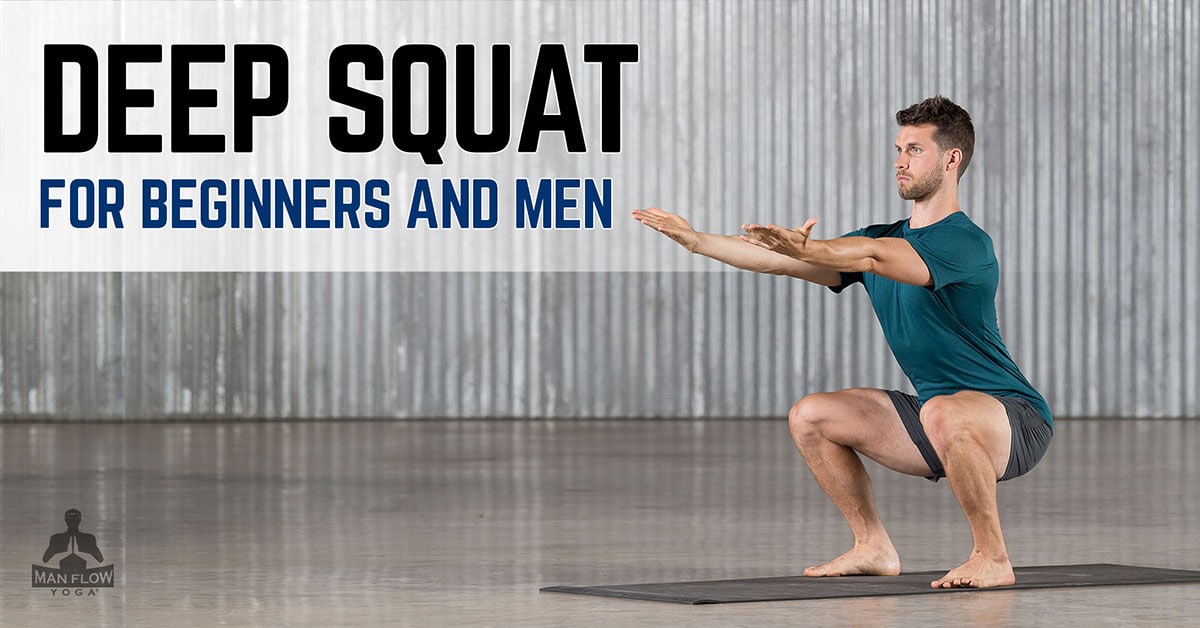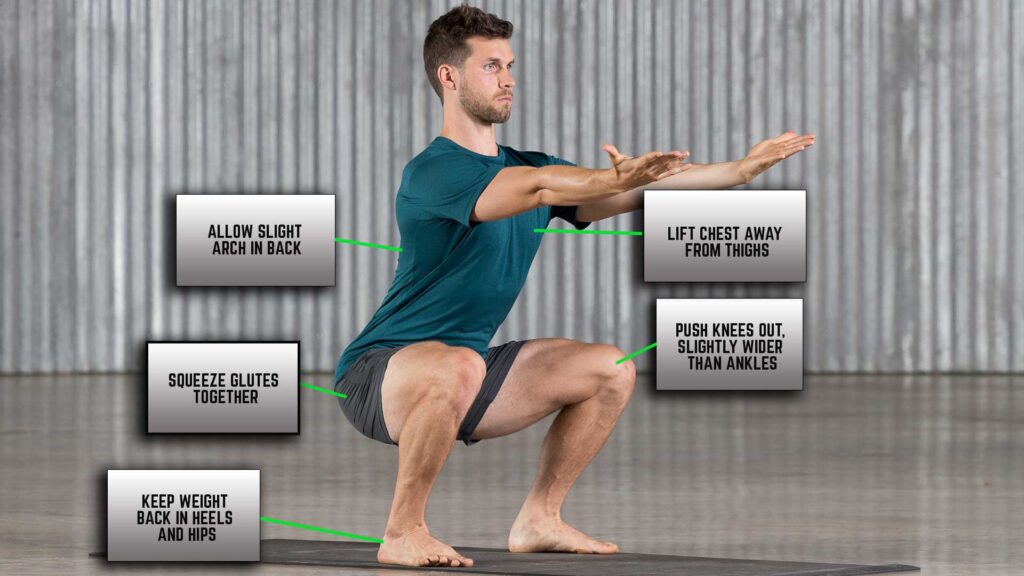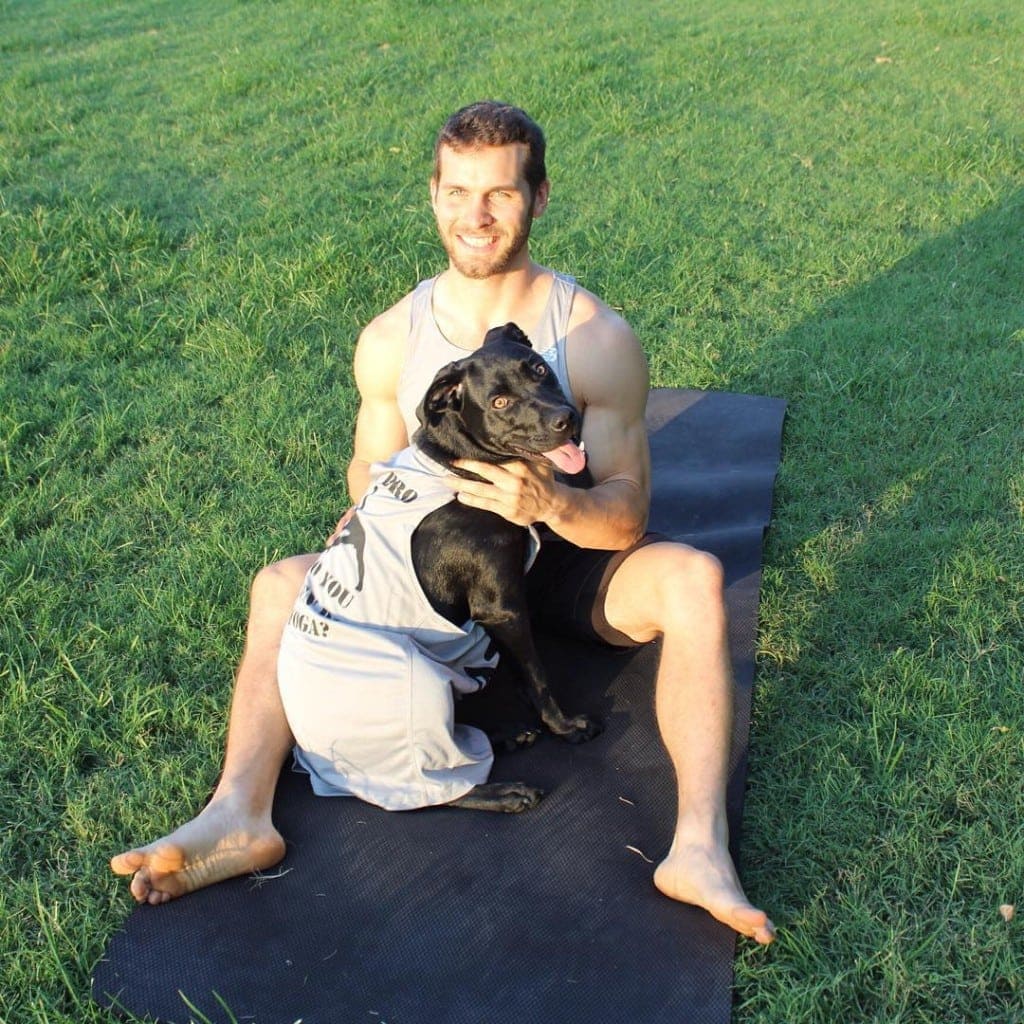Deep Squat for Beginners and Men | A Step-by-Step Tutorial
No matter your fitness aspirations, every person can benefit from an improved squat technique—it’s the most important of all lower-body exercises. Deep squat will build core and hip strength, improve hip and ankle mobility, and prevent pain or injury...

No matter your fitness aspirations, every person can benefit from an improved squat technique—it’s the most important of all lower-body exercises. Deep squat will build core and hip strength, improve hip and ankle mobility, and prevent pain or injury in your spine and knees. Squat daily!
Deep Squat Target Areas
HipsCoreAnklesThighsDeep Squat Benefits
Improves hip power, strength, and enduranceBuilds functional core strengthStrengthens spine and prevents lower-back pain– click images to enlarge –
 Deep Squat – Step 1
Deep Squat – Step 1 Deep Squat – Step 2
Deep Squat – Step 2How to Do Deep Squat
Stand with your feet shoulder-width apart, toes facing straight forward. (It’s okay to angle toes slightly outward at first, if needed.)Slightly arch your lower back. Raise arms to shoulder height, palms facing the ceiling.Keeping your chest upright, slowly lower your hips down and back into a squat until hips are just below the knees. Press down firmly through your heels, the balls of your feet, and your toes. Drive knees outward to engage glutes. Keep arms extended in front of you to maintain balance.Hold the posture, inhaling as you lift the chest and get taller, and exhaling as you sit deeper.Cues for Deep Squat
Slightly arch lower backKeep chest liftedEngage coreKeep weight back in heels and hipsSqueeze glutes togetherAllow slight arch in backPush knees out, slightly wider than anklesWHAT YOU SHOULD FEEL
Engagement of glutes, hips, and coreWHAT YOU SHOULDN’T FEEL
Weight shifted forward in knees; if you do, shift weight back into hipsTension in knees; if you do, push hips further back, and squeeze glutes and inner thighsDeep Squat Pro Tip
Once you are in the squat, lightly press your hands into inner thighs to lift torso away from thighs and push knees outward. This helps strengthen the core more.
Deep Squat Modification
If it is difficult to remain upright while arching your back and squatting, hold on to a sturdy external support, and use Keep weight it to lean back and sit deeper.
 Deep Squat Modification
Deep Squat ModificationAbout Dean Pohlman, Founder & CEO of Man Flow Yoga, Author of Yoga Fitness for Men, Expert on Yoga Fitness for Men.

Dean Pohlman is an E-RYT 200 certified yoga instructor and the founder of Man Flow Yoga. Dean is widely considered to be an authority on Yoga for Men. He has worked with physical therapists to create yoga programs for back health and spinal recovery. His workouts and programs have been used by professional and collegiate athletes, athletic trainers, and personal trainers; and have been recommended by physical therapists, doctors, chiropractors, and other medical professionals.
Dean is a successfully published author through DK Publishing (Yoga Fitness for Men), selling 35,000 copies worldwide in English, French, and German; in addition to being a co-producer of the Body by Yoga DVD Series, which has sold over 40,000 copies on Amazon since its release in 2016.
Man Flow Yoga has been featured in Muscle & Fitness Magazine, Mens’ Health, The Chicago Sun, New York Magazine, and many more major news media outlets.
FAQs
What are the benefits of a Deep Squat?
The deep squat will build core and hip strength, improve hip and ankle mobility, and prevent pain or injury in your spine and knees.
How long should you hold a deep squat?
If you’re new to the pose, start with 10-20 seconds and build from there. Make sure and use proper technique to prevent any discomfort or injury. You can also use a modification by holding on to a poll or doorframe to help support you.
Why are Deep Squats so Hard?
Deep squats can be challenging for several reasons, especially for individuals who are not accustomed to performing them. Some of the reasons include:
– Limited mobility and flexibility
– Lack of Strength
– Lack of balance
– Muscle imbalances
– Fear and mental barriers

 Fransebas
Fransebas 































